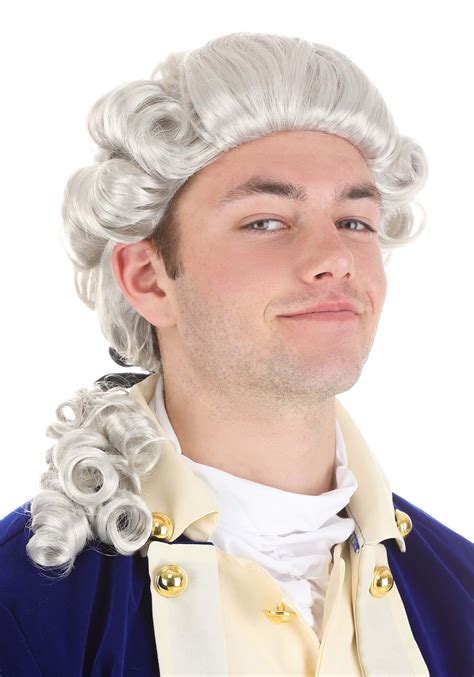
Classical powdered wigs, also known as periwigs or periwig, have a long and fascinating history dating back to the 16th century. These elaborate and highly stylized wigs were once an essential part of formal attire for both men and women in Western cultures.
History of Classical Powderd Wigs
The origins of the powdered wig can be traced back to the 16th century, when it became fashionable to dye hair black. This trend was popularized by the French court, and soon spread to other parts of Europe. In the 17th century, wigs began to be worn as a way to cover up thinning hair or baldness.
By the 18th century, powdered wigs had become an essential part of formal dress for both men and women. They were worn by everyone from royalty to commoners, and were a sign of wealth and status. Wigs were typically made of human hair, and were often bleached white or powdered with a white powder made of wheat flour or rice powder.
The popularity of powdered wigs began to decline in the late 18th century, as more natural hairstyles became fashionable. However, they continued to be worn by some people into the 19th century. Today, powdered wigs are still worn by some members of the clergy and by historical re-enactors.
Types of Classical Powderd Wigs
There were many different types of powdered wigs worn during the 18th century. Some of the most popular styles included:
- The full-bottomed wig: This was the most elaborate and formal type of powdered wig. It was worn by men and women, and was characterized by its long, flowing curls.
- The bob wig: This was a shorter and more practical wig that was worn by both men and women. It was characterized by its shorter curls and its square-cut bottom.
- The bag wig: This was a type of wig that was worn by men. It was characterized by its long, loose bag that hung down over the shoulders.
- The Ramillies wig: This was a type of wig that was worn by men. It was characterized by its short, choppy curls and its flat top.
Construction of Classical Powderd Wigs
Powdered wigs were typically made of human hair. The hair was first cut and curled, and then bleached white or powdered with a white powder made of wheat flour or rice powder. The wig was then styled into the desired shape and size.
Wigs were often very expensive, and could take several days to make. They were also very delicate, and had to be carefully maintained. They were typically washed in a solution of lukewarm water and vinegar, and then powdered with a white powder made of wheat flour or rice powder.
Wearing Classical Powderd Wigs
Powdered wigs were worn by both men and women. They were typically worn in conjunction with other formal attire, such as a waistcoat, a coat, and a hat.
Wigs were often very heavy and uncomfortable to wear. They were also very hot, and could make the wearer sweat profusely. However, despite their discomfort, wigs were considered to be an essential part of formal dress.
Decline of Classical Powderd Wigs
The popularity of powdered wigs began to decline in the late 18th century, as more natural hairstyles became fashionable. By the end of the 19th century, powdered wigs were rarely worn, except by a few members of the clergy and by historical re-enactors.
Today’s Use of Classical Powderd Wigs
Today, powdered wigs are still worn by some members of the clergy and by historical re-enactors. They are also sometimes worn by actors and actresses in period dramas.
In recent years, there has been a growing interest in powdered wigs among fashion designers and stylists. Some designers have even begun to incorporate powdered wigs into their modern collections.
Conclusion
Classical powdered wigs are a fascinating and unique part of fashion history. They were once an essential part of formal attire for both men and women, and they continue to be worn by some people today.
